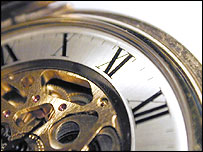Researchers used short laser pulses to produce images of electrons as they left the atom, taking another image after 100 attoseconds

Researchers used short laser pulses to produce images of electrons as they left the atom, and took another image after 100 attoseconds.
In order to understand how short this period of time is, imagine that we "stretched" time, so that one hundred attoseconds last one second. If so, on the same scale one second would last 300 million years.
Scientists used this technique to record the dynamics of the electrons in the atom. They presented their findings in the journal Nature.
The research team exposed atoms to pulses of ultraviolet light (XUV - Extreme Ultra Violet) in order to excite them and cause them to emit electrons, the tiny particles charged with a negative electric charge. Electrons are a fundamental component of every atom.
"We accelerate the electrons, which revolve around the nucleus. Some absorb so much energy that they leave the nucleus permanently," Professor Frank Kraus of the Technion in Vienna, Austria, told the BBC.
The researchers also used a device called a Few Cycle Laser to take tomographic images of the electrons, images that reveal a lot of information about the behavior of the electrons over time.
This action allowed the scientists to distinguish the events, the time difference between which is 100 attoseconds. This is the smallest time difference ever measured.
The innovation raises possibilities of more accurate time measurement than ever.
Today sealed watches are extremely accurate. They measure time by counting the number of times cesium atoms jump between different energy levels.
These skips, or "ticks", occur at microwave frequencies, but researchers are constantly looking for ways to measure ticks at optical frequencies using lasers.
Success in this area will raise the possibility of more stable and therefore more accurate watches.
"The more stable the clock, the better our ability to measure time," said Dale Henderson of the UK's National Physics Laboratory.
